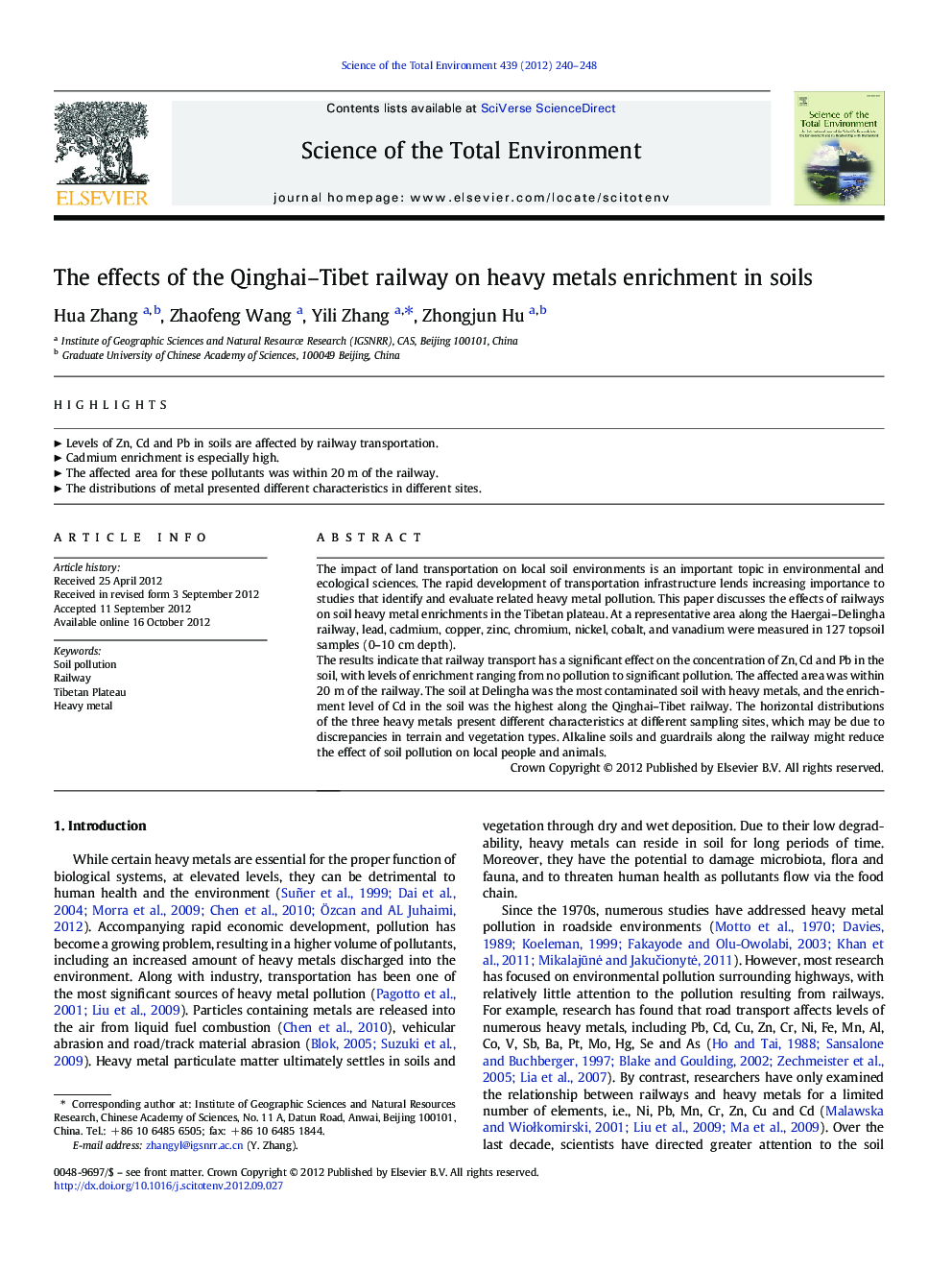| کد مقاله | کد نشریه | سال انتشار | مقاله انگلیسی | نسخه تمام متن |
|---|---|---|---|---|
| 4429208 | 1619814 | 2012 | 9 صفحه PDF | دانلود رایگان |

The impact of land transportation on local soil environments is an important topic in environmental and ecological sciences. The rapid development of transportation infrastructure lends increasing importance to studies that identify and evaluate related heavy metal pollution. This paper discusses the effects of railways on soil heavy metal enrichments in the Tibetan plateau. At a representative area along the Haergai–Delingha railway, lead, cadmium, copper, zinc, chromium, nickel, cobalt, and vanadium were measured in 127 topsoil samples (0–10 cm depth).The results indicate that railway transport has a significant effect on the concentration of Zn, Cd and Pb in the soil, with levels of enrichment ranging from no pollution to significant pollution. The affected area was within 20 m of the railway. The soil at Delingha was the most contaminated soil with heavy metals, and the enrichment level of Cd in the soil was the highest along the Qinghai–Tibet railway. The horizontal distributions of the three heavy metals present different characteristics at different sampling sites, which may be due to discrepancies in terrain and vegetation types. Alkaline soils and guardrails along the railway might reduce the effect of soil pollution on local people and animals.
► Levels of Zn, Cd and Pb in soils are affected by railway transportation.
► Cadmium enrichment is especially high.
► The affected area for these pollutants was within 20 m of the railway.
► The distributions of metal presented different characteristics in different sites.
Journal: Science of The Total Environment - Volume 439, 15 November 2012, Pages 240–248